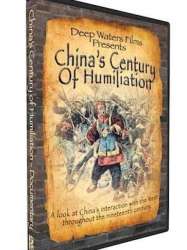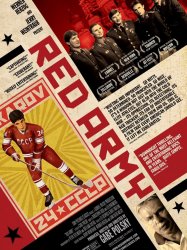The Men Who Lost China is a american film directed by Mitch Anderson released in USA on 15 may 2013
The Men Who Lost China (2013)

If you like this film, let us know!
The Men Who Lost China is a documentary film created by Mitch Anderson. Released in 2013, the documentary explores the United States' attitude towards China following the 1911 Chinese Revolution and the First World War, and how this and the attitude of other Western nations at the time helped shape China's national identity and in particular, its foreign policy and alignment with the former Soviet Union.
Comments
Leave comment :
Suggestions of similar film to The Men Who Lost China
There are 2 films with the same director, 8199 films with the same themes (including 515 films with the same 3 themes than The Men Who Lost China), to have finally 70 suggestions of similar films.If you liked The Men Who Lost China, you will probably like those similar films :

The World Without US (2008)
, 1h24Directed by Mitch Anderson
Origin USA
Genres Documentary
Themes Documentary films about historical events, Documentary films about politics, Political films
Actors Rob Mayes
Rating55%





 , 1h17
, 1h17Directed by Mitch Anderson
Origin USA
Genres Documentary
Themes Documentary films about historical events
Rating65%






Split: A Deeper Divide (2008)
Themes Documentary films about historical events, Documentary films about politics, Political films
Rating65%






Galoot (2003)
, 2h32Genres Documentary
Themes Films set in Africa, Films about religion, Documentary films about law, Documentary films about war, Documentary films about historical events, Documentary films about politics, Documentary films about religion, Political films, Films about Jews and Judaism

Confrontation at Concordia (2003)
Origin Canada
Genres Documentary
Themes Films set in Africa, Films about religion, Documentary films about law, Documentary films about war, Documentary films about historical events, Documentaire sur une personnalité, Documentary films about politics, Documentary films about religion, Documentary films about cities, Political films, Films about Jews and Judaism
The documentary opens with scenes of the violence at the event, depicting fighting between protesters and Jewish students attempting to enter the venue. This is followed by an interview with student Samir Elitrosh, a leader of the Solidarity for Palestinian Human Rights and the leader of anti-Israel violence who was later suspended. It also features interviews with Concordia's Hillel president Yoni Petel and Concordia rector Frederick Lowy, and concludes with a discussion of what it sees as the growing trend of anti-Israel activities on North American campuses.

Statues Also Die (1953)
, 30minutesDirected by Chris Marker, Alain Resnais
Origin France
Genres Documentary
Themes Films set in Africa, Films about racism, Documentary films about racism, Documentary films about law, Documentary films about historical events, Documentary films about politics, Political films
Actors Jean Négroni
Rating74%





The film exhibits a series of sculptures, masks and other traditional art from Sub-Saharan Africa. The images are frequently set to music and cut to the music's pace. The narrator focuses on the emotional qualities of the objects, and discusses the perception of African sculptures from a historical and contemporary European perspective. Only occasionally does the film provide the geographical origin, time period or other contextual information about the objects. The idea of a dead statue is explained as a statue which has lost its original significance and become reduced to a museum object, similarly to a dead person who can be found in history books. Interweaved with the objects are a few scenes of Africans performing traditional music and dances, as well as the death of a disemboweled gorilla.

Origin United-kingdom
Genres Documentary
Themes Documentary films about historical events, Documentary films about politics, Political films
Actors Vasile Albineț, Martin Hancock, Jan Pearson, Jonny Phillips, Ed Stoppard
Rating73%





In 1794, French revolutionary Maximilien Robespierre produced the world's first defense of "state terror" - claiming that the road to virtue lay through political violence. This film combines drama, archive and documentary interviews to examine Robespierre's year in charge of the Committee of Public Safety - the powerful state machine at the heart of Revolutionary France. Contesting Robespierre's legacy is Slavoj Žižek, who argues that terror in the cause of virtue is justifiable, and Simon Schama, who believes the road from Robespierre ran straight to the gulag and the 20th-century concentration camp. The drama, based on original sources, follows the life-and-death politics of the Committee during "Year Two" of the new Republic. It was a year which gave birth to key features of the modern age: the thought crime; the belief that calculated acts of violence can perfect humanity; the notion that the interests of "mankind" can be placed above those of "man"; the use of policemen to enforce morals; and the use of denunciation as a political tool.

Nuba Conversations (2000)
, 56minutesOrigin United-kingdom
Genres Documentary
Themes Films set in Africa, Films about religion, Films about terrorism, Documentary films about law, Documentary films about war, Documentary films about historical events, Documentary films about politics, Documentary films about religion, Documentary films about terrorism, Political films, Films about Islam
Ten years after shooting Kafi's Story British filmmaker Arthur Howes reentered in Sudan clandestinely to find out what had happened to the Nuba peoples of Torogi.

Son of al Qaeda (2004)
Origin Canada
Genres Documentary
Themes Films about terrorism, Documentary films about law, Documentary films about war, Documentary films about historical events, Documentaire sur une personnalité, Documentary films about politics, Documentary films about terrorism, Political films
Rating26%






Red Army (2014)
, 1h25Origin USA
Genres Documentary, Historical
Themes Sports films, Documentary films about sports, Ice hockey films, Documentary films about war, Documentary films about historical events, Documentary films about politics, Political films, Sports d'hiver
Rating75%





Dans une première partie Red Army traite du recrutement et de la formation des joueurs professionnels de hockey sur glace durant l'ère soviétique. Puis il suit l'histoire de l'équipe nationale dans les années 1980 à travers le parcours des cinq joueurs vedettes de l'époque avec une emphase sur la carrière de Viatcheslav Fetissov le joueur le plus célèbre de cette formation. Tous ces joueurs faisaient partie du club Armée Rouge de Moscou rattaché à l'Armée soviétique. Les thèmes traités dans le documentaire portent sur le poids de la propagande soviétique, le caractère dictatorial des entraineurs mais également sur la finesse du jeu des joueurs soviétiques. Enfin, à travers le destin des joueurs vedettes, il montre les conséquences de la Pérestroïka et de l'éclatement de l'Union soviétique sur le sport professionnel soviétique.
 Connection
Connection